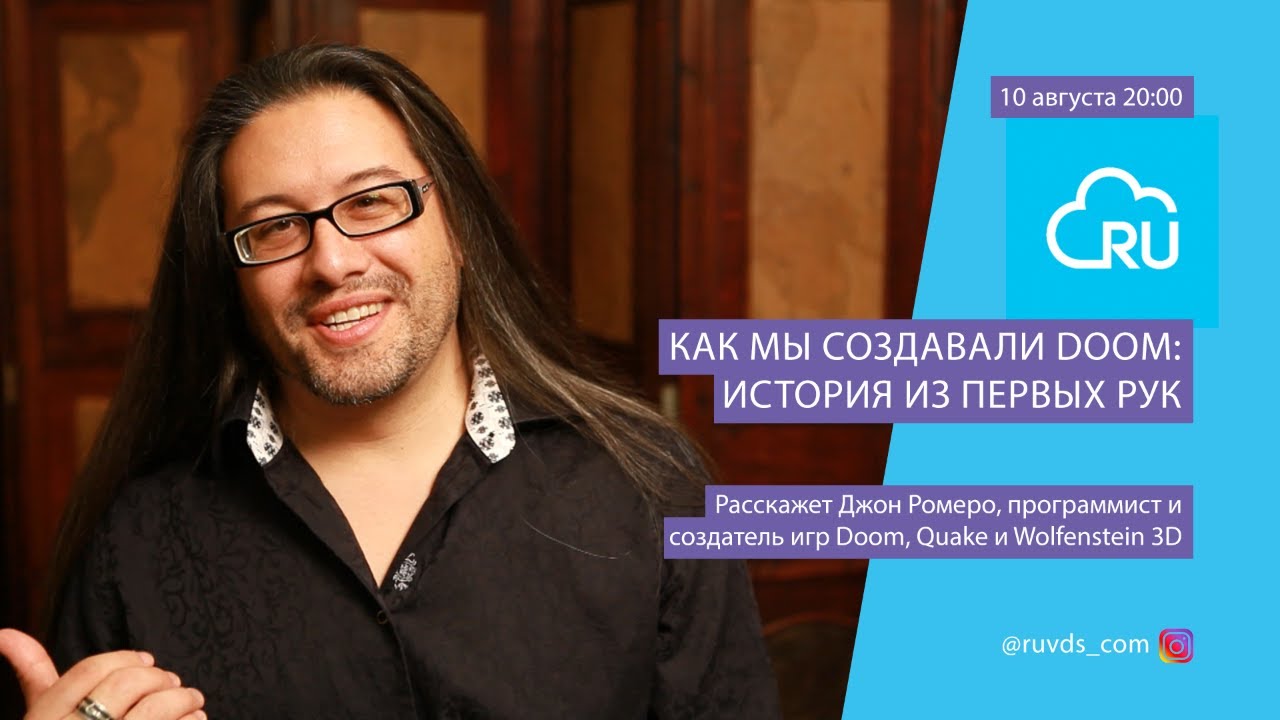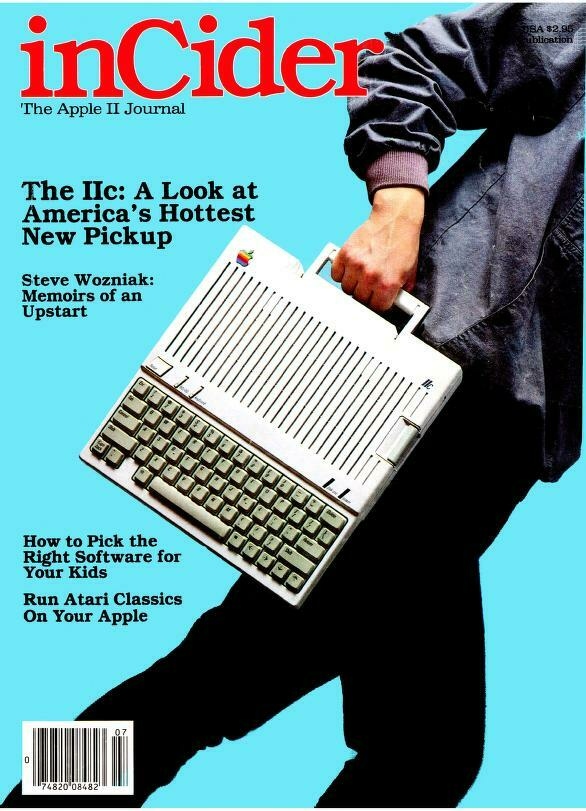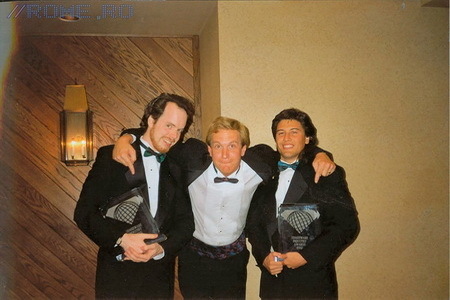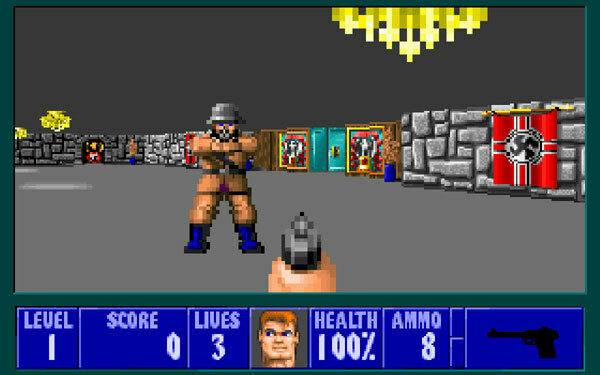
TOMORROW, August 10 at 20:00, will be streaming live with John Romero, creator of Doom, Quake and Wolfenstein 3D. This will be an evening of warm tube stories on request: you ask questions in the comments, and John tells how it was. As usual, you can watch on any convenient site. Romero and his friend John Carmack took part in the creation of the most iconic games of our generation when he was just 20 years old, they were called the Lennon and McCartney of the world of the gaming industry. We have already published an interview with John , which




ntsaplin took a year ago, let's briefly go over its history.
How the gamedev star was born: a brief history of Doom
Once little John (his real name was Alfonso, but his mother called him Johnny) played Pacman and realized what wonders game design can do even in the limited conditions of graphics and sound.
In 1984, he created his first game on paper and sent it to the then popular magazine inCider.

Magazine cover July, 1984
Three years later, he gets into industrial game design and participates in porting the game 2400 AD from Apple II to the Commodore64 platform, but soon leaves and founds id Software with friends - the one that will release Doom.

It was then that a brilliant trio was formed: Tom Hall, John Romero and John Carmack.
In 1992, the guys released the game Wolfenstein 3D, sponsored by Apogee Software, having written them an advance of 100 thousand dollars and promised a 50% royalty.

The game is becoming a cult hit, receiving critical acclaim and magazine awards, and estimated to have sold 200,000 copies by the end of 1993.
Right before its release, the company decides to move from the "family" visual style of games to a more mature and hardcore style. Romero proposes to make a fast action remake of Castle Wolfenstein, he and game designer Tom Hall are developing the fastest and most brutal shooter, radically different from the games of the time.
Wolfenstein 3D was distributed on a shareware model: the first episode was free and fueled interest in buying the rest of the following. The success was dizzying, and the game proves the viability of the shareware model.
The game took only 6 months to create, but laid down a number of games of the future, popularized the first-person shooter genre, became a model for fast-paced action games and set the bar for technological execution.
And then there was Doom
Here's what Romero himself has to say about the creation of Doom:
The attitude was: we have to make the greatest game ever. All the coolest that we can only imagine, we must add to it. This was the only time that we took up development with this approach. Before and after Doom, we started creating the project, thinking that we would just see what we did, but that time it was different. We had a clear goal - to make the best game of our life.
Determined to dazzle the world with the best game of the millennium and how to make money on it, the guys stop working with Apogee and move to the seven-story Town East Tower - a cube-shaped building with darkened windows.

Town East Tower, where the guys from id Software created their hell. The
guys got pizza and started developing the concept. Almost immediately, a disagreement arose between lead game designer Tom Hall and Romero.
Tom Hall, as creative director, was determined to create not just another plotless first-person shooter, but a depth-filled, more cinematic game. “Maybe we can tell the story of scientists on the far side of the moon? He suggested. "
However, Carmack Thoma did not support. "The plot in the game," he said, "is akin to the plot in a porn film: of course, it is assumed there, but it does not dominate."
Several main characters were planned, and with different characteristics: one is more tenacious and loves shotguns, the other runs fast, the third can rip the belly of the enemy with a bayonet. All of this resulted in the writing of The Doom Bible, a veritable design document with a mouthful of ideas.
It was clear from the start that Doom would be one of a kind. The most breakthrough and interesting was the darkening effect, when the virtual space gradually plunges into absolute darkness. Romero immediately saw the potential of the technology: when he saw the darkening effect, different images began to appear in his brain. "Tell me, is it possible to change the brightness of the light on the fly," he asked, "or will you have to calculate everything in advance?"
“Well,” Carmack said, “I can make the light dynamic.
- Cool! Then let us have strobes! Just imagine: you run across the room, and - bz-z-z! bz-z-z! bz-z-z! - the light is cut out!
Team members Adrian and Kevin had a lot of fun inserting their own scans into the game. Inspired, Adrian scanned his snakeskin boots and used the image to get a special texture in one of the game's levels. One day, Kevin came to work with a broken knee, and the guys scanned the wound in order to later use the picture. In the bizarre world of DOOM, anything could come in handy.
In early December 1993, work on DOOM was nearing completion. The guys stopped going home in the evenings and slept right on the floor, sofas, under desks, in armchairs. Dave Taylor, who was hired to help with the additional programming, even gained a reputation as the person who immediately passed out on the floor. The longer he played, the faster he passed all the endless corridors and the more his head started spinning. After a few minutes of such an impetuous run, Dave usually lay down on the floor to recover a little. And sometimes I fell asleep at such moments. But this happened so often that one evening the guys took scotch tape and traced the contours of his body on the floor.
On Friday, December 10th, the hour of DOOM finally struck. After spending thirty hours testing the game for bugs, the guys were ready to put it on the Internet. Joyful, but squeezed like a lemon, the guys said goodbye to each other and went home to rest for the first time in many months. Only Jay stayed in the office - he wanted to see how the download went. Half an hour later, the last bit of DOOM went to Wisconsin. And then ten thousand gamers pounced on the site. The force of their pressure was excessive - the computer network of the University of Wisconsin collapsed.
“Oh my God,” David said to Jay over the phone. “I've never seen anything like it in my life. DOOM blew up the global gamer community.
And now again about the broadcast: what language will the broadcast be in? Will there be simultaneous translation?
John speaks English, but we remember your request to find a simultaneous interpreter "in the subject", so Samat Galimov, author of the telegram channel and podcast Launch Tomorrow , ex-CTO of Medusa and a big fan of Doom , will speak . He will translate everything into Russian and back on a split-screen.

Since we are trying to move away from the ossified interview format and make normal content that is interesting for the community, we do not prepare questions in advance, but ask you.
So what would you like to ask Romero?
Write in the comments - we will collect comments until the very beginning of the broadcast. Top 10 Questions Samat will ask Romero live. You can also write questions on Instagram.

We remind you once again where and when
On our YouTube, follow this link . Don't forget to press the bell.
Beginning on Monday 10 August at 20:00. The broadcast will last an hour.
If during the broadcast you will be only with your phone, then you can watch the broadcast in our instagram account as well .
See you live!
Come warmly hang and feel nostalgic.